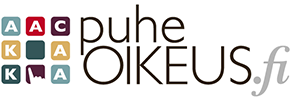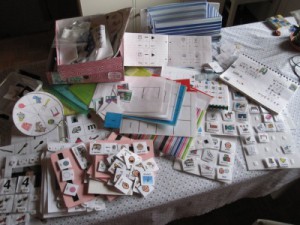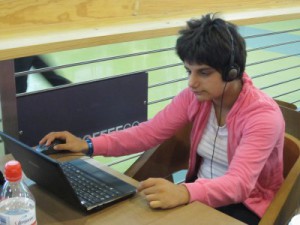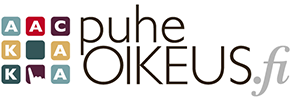Non-talking autists with cognitive disorder could learn so much – if we allowed them to. Revolutionary method within special education based on AAC increased productivity thousandfold on a yearly basis
The non-talking autists, the first language of which is AAC, alternaive and augmentative communication methods (ie. signs, symbols etc.) do not have a single school book, written in their mother tongue, during their whole basic education at school. They do not necessary have trained teachers or specials needs teachers either. The teaching mainly takes place with different sets of cards, a slow and rather clumsy method that tends to cement kids at a low level of skills. Often, the group is highly PC-literate. In spite of that, they tend not to get any PC:s or Ipads as a means of support. Their skills and needs are ignored due to the fact that they might not handle buttons or zippers very well or because turning pages causes problems. If a ‘gadget’ can be used both as a means of communication and as a tool for education, these kids become neither two nor one, but zero gadgets – as different units within the very same municipality try to get rid of the costs. Yet and still, these individuals will need ICT as they are predestined to communicate through letters or symbols and speech syntheses throughout their lives. They are deprived of their right to talk.
By putting signs and symbols into Lexion, a PC-programme used in the rehabilitation of dyslexia, aphasia etc, the door to a revolution in special education opened before my very eyes.
We managed to increase the productivity within special education more than thousandfold (not %) p.a. in ability to read, linguistic awareness, general knowledge and mathematics. A highly exceptional outcome was that a foreign language can be learned using this method. It has implications for immigrant education. The learning results are very encouraging.
Manually with loads of cards and storage problems or Signs and symbols in Lexion – headsets, clear sounds, quiet, variation?
The monthly ’dosis’ consists of one daily hour of PC-work. The pupil has plenty of time to work through 15-16 exercises, each consisting of 2-8 elements and 10-40 repetitions. New themes and variations are added during the term in accordance with the curriculum and the annual calendar. The level of difficulty of each exercise increases and the requirements rise hand in hand with progress in learning. By acting this way, we get a 40-250 –fold monthly increase in productivity compared with manual methods.
The results are astonishing
With only one hour a day, astonishing results are shown in academics, communication, interaction; linguistic skills (foreign language) ans study technique. The sentences have grown from 2-3 up to 4-8 words. Using signs, symbols and sounds, we have even discussed the lives and works of Topelius and Runeberg (the authors of our national epic), world religions, our country being bilingual, handicap issues and the languages of the world. The use of signs has increased drastically.
More than 600 Finnish words have been learned during the school year – using auditive memory and symbols! Finnish is the other national language for talking pupils – all kids learn both languages. It’s considered kind of a ‘language sprinkler’ (not as heavy as a language shower) in special education. The learning result is the one of a unilingual (registered as Swedish speaker), AAC-communicating, non-speaking, non-reading, non-writing, cognitively disabled (and from abroad adopted) autistic girl (who already once has changed her mother tongue from one linguistic group to another..
In September, there was hesitation in the use of the numbers 1 to 5. Today, in May, 1 to 10 go fluently, 1-12, too. In parallel, there is a use of 20, 30 etc as well as words and signs expressing amounts and sizes. In ‘Build words from letters’ the time of the model word being shown could be decreased from 4 seconds in February, via 2 and 1 seconds to 0.5 seconds in May without anyone noticing the difference . Words consisting of 2-3 letters are built in a certain order from a list, during 5 minutes of time. In four months, there has been an increase in the number of words being written, from 15-20 to 25-30 (depending on the mood
Conclusions
Using signs and symbols in Lexon, we could achieve learning, in the widest meaning of the word, in a very cost efficient way. At the same time, we might be received with sexpressions of joy from the part of the pupils/users: at last someone who cares and who removes the obstacles from my path. And who gives me a right to talk and power over my own life.
Terry (Thérèse) Grahn
M.A., behavioural scientist, educationist/pedagogue, MBA(Henley), R.N. (spec.), lobbyist and care giverare, specialist in AAC (lo-tech, hi-tech), AAC special education, signs (Finnish, Fenno-Swedish), oral motor skills and lobbying (rights, processes, substance and competence)
Twitter AAC_Terry
www.puheoikeus.fi (Right to talk, yttranderätt)
FPHOTOS and METHODOLOGY (AAC special education, AAC-Lexia(Lexion) ©: Terry Grahn
signs and symbols: Lexia, Handlaget, SPSM, Widgit, BM and Papunet








